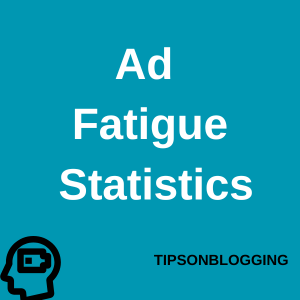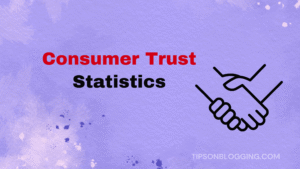Are you curious about the state of ad fatigue in 2025? Then look no further, you’re definitely in the right place.
I’ve done all of the hard work for you and deeply researched, curated, vetted and categorized 14 ad fatigue statistics for your pleasure.
Without wasting precious time, let’s quickly jump to it.
General Ad Fatigue Statistics
91% of people believe ads are more intrusive now than they were in the past (Hubspot)
According to a survey of 1,055 online browsers in the United States, 91% of people responded that there are more intrusive ads today when compared to 2 to 3 years ago.
31.5% of internet users use ad blockers (Backlinko)
Globally as of Q2024, Gwi found that nearly 32% of all internet users (16-64 years old) are now using Ad blockers. And it is not only on Desktop, with technology advancing, ad-blocking software for both mobile and tablets are also available now.
36% of U.S brands and agencies say managing reach an ad frequency across screens and channels are one of their greatest challenges (IAB)
A November 2023 data revealed that 36 % of US companies are struggling to properly manage how frequently their ads show on screens and marketing channels and platforms. This includes Facebook, Instagram, etc.
Viewers who saw and ad the first time are 5.7% more prone to purchase than not seeing at all (Simulmedia)
In a Simulmedia research it was discovered that people who saw an ad once were more than 5.7% “more likely” to purchase than not seeing it at all.
People who saw an ad 6 times were 4.1% less likely to buy a product than those who saw the ad 2-5 time and 11+ times were 4.2% less likely to buy than those who saw it 6-10 times
In the same Simulmedia research, the more times people saw the ad, the less likely they are to purchase (at 4.1%). This means the more frequently they see the same ad, they lose interest.
87% of people believe there are more ads in general
Nearly 90% of the Hubspot respondents of over 1,055 online browsers earlier agree there are more ads generally compared to the past.
74% of respondents think brand loyalty is most negatively affected by bad ads while 55% of of the same consider frequency and relevancy as the top factors in bad ads (Thunder)
A survey of more than 80 CMOs found out that 78% of CMos think bad ads affect brand loyalty negatively the most, and 55% cited frequency and relevancy as the major factor that causes bad ads.
On average a person sees 4,000 to 10,000 ads daily (Red Crow Marketing)
RedcrowMarketing data and studies finds that on estimate, most Americans are exposed to 4,000 to 10,000 ads each day.
59% of viewers see the same ads repeatedly and say it leads to a negative impact on their viewing experience, 50% get annoyed and 26% say it has negatively impacted their purchasing decision. (AD-ID)
A Harris Poll Survey of more than 2,000 U.S adults (aged 18+) found that nearly 60% of TV and stream content viewers said that repeated ads negatively impacted their viewing experience. Half said it annoyed them and 26% said it caused them to reconsider their decision to buy.
Ad Fatigue Influence on Purchases Statistics
Ad fatigue can decrease CTR by 35% and increase CPC by 20% (Adespresso)
Adespresso data revealed that Ad fatigue can lead to a 35% decrease in click-through rate and increase Cost per click of ads by 20%. If your target audience sees the same ad repeatedly and it leads to ad fatigue, it is not a good thing for your ad campaign.
61% of consumers say if a brand shows the same advertisements repeatedly, they are less likely to purchase their products or use services, while 49% would not purchase from a brand showing ads too often
The same Harris Poll earlier also revealed that 61% of U.S adults say they are less likely to purchase products and services of a company that shows the same ads repeatedly, and nearly half (49%) say they have decided to not purchase from a brand that shows ads too often.
79% of consumers have unsubscribed from at least one retail brand in the previous 3 months and 61% from 3 or more retail brands (Optimove)
A 2023 survey found that 79% (Nearly 8 in 10 consumers) have unsubscribed from one retail brand in the past 90 days because of too many marketing messages. Additionally, 61% have unsubscribed from three or more retail brands due to the same reason.
91% of people agree they see too many ads on social media, 37% have blocked specific ads and 35% have unfollowed a brand in the past year (Capterra)
According to a survey of 499 regular online shoppers in the United Kingdom, over 91% of consumers (9 out of 10) say they see too many ads on social media.
83% of people want to cut out on intrusive ads and 79% feel they’re being tracked due to retargeted ads
According to a Hubspot survey of 1,055 U.S online browsers, over 83% of respondents say not all ads are bad, but they want to filter out the intrusive ones. While 79% say they feel tracked by retargeted ads.
Incorporate These Ad Fatigue Stats Into Your Digital Marketing Ad Campaigns
People want to see ads no doubt, but statistics reveal that less is always better at least in this case. To get the best results you have to personalize your ads and keep it relevant.
Employing this data in your marketing campaigns will ensure you are giving your target audience exactly what they want while reducing Ad spend and increasing ROI.
If you are looking for more statistics, then check out my statistics articles:
- Consumer Trust Statistics
- Customer Lifetime Value Statistics
- Location Based Marketing Statistics
- Nostalgia Marketing Statistics
- AI Agents Statistics
- AI Misuse Statistics
- Humor in Marketing Statistics
- Deepseek Statistics
- Relationship Marketing Statistics
- Ad Fatigue Statistics
- Product Placement Statistics
- Value Based Selling Statistics

Hello, I’m Prosper Noah, a digital marketer with more than 8 years of experience. My ultimate goal on this website is to use the power of online marketing to help businesses get more visibility and reach more customers.

